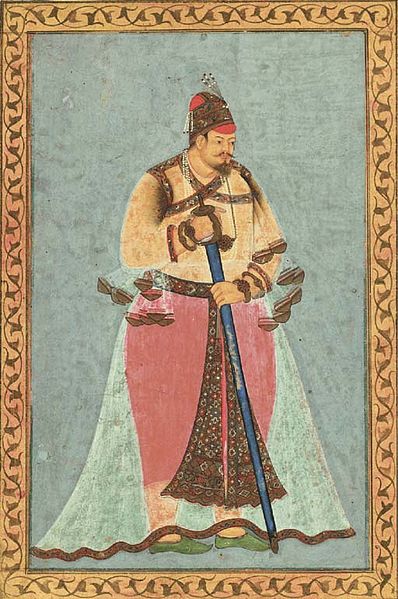The Adil Shahi or Adilshahi, was a Shia, and later Sunni Muslim, dynasty founded by Yusuf Adil Shah, that ruled the Sultanate of Bijapur, centred on present-day Bijapur district, Karnataka in India, in the Western area of the Deccan region of Southern India from 1489 to 1686. Bijapur had been a province of the Bahmani Sultanate (1347–1518), and member of the Deccan Sultanates, before its political decline in the last quarter of the 15th century and eventual break-up in 1518. The Bijapur Sultanate was fully absorbed into the Mughal Empire on 12 September 1686, after its conquest by the Emperor Aurangzeb.
Ibrahim Adil Shah II
Sultan Ali Adil Shah II hunting a tiger, c 1660
A painting of "The House of Bijapur" was completed in the year 1680, during the reign of Sikandar Adil Shah the last ruler of the Adil Shahi dynasty.
Chand Bibi, the regent of Bijapur (1580–90)
Yusuf Adil Shah (1450–1510), referred as Adil Khan or Hidalcão by the Portuguese, was the founder of the Adil Shahi dynasty that ruled the Sultanate of Bijapur for nearly two centuries. As the founder of the newly formed Bijapur dynasty, Yusuf Adil Shah is credited with developing the town of Bijapur and elevating it to significant status.
Painting created c. 1680 in Bijapur. Yusuf Adil Shah, shown seated, is being handed the key of legitimacy by Shah Ismail I of Safavid Iran, symbolizing the unwavering allegiance of the Adil Shahi family to the Shia creed of Islam. All nine Adil Shahi sultans are depicted in the painting in a dynastic assembly probably inspired by Mughal paintings.





